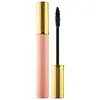What's inside
What's inside
 Key Ingredients
Key Ingredients

 Benefits
Benefits

 Concerns
Concerns

 Ingredients Side-by-side
Ingredients Side-by-side

Water
Skin ConditioningSynthetic Beeswax
Emulsion StabilisingParaffin
PerfumingStearic Acid
CleansingAcacia Senegal Gum
MaskingTriethanolamine
BufferingButylene Glycol
HumectantCopernicia Cerifera Cera
EmollientPolybutene
Vp/Eicosene Copolymer
Glyceryl Stearate
EmollientPhenoxyethanol
PreservativeHydroxyethylcellulose
Emulsion StabilisingPotassium Sorbate
PreservativeAscorbyl Palmitate
AntioxidantTocopherol
AntioxidantSodium Stearate
CleansingIron Oxides
Water, Synthetic Beeswax, Paraffin, Stearic Acid, Acacia Senegal Gum, Triethanolamine, Butylene Glycol, Copernicia Cerifera Cera, Polybutene, Vp/Eicosene Copolymer, Glyceryl Stearate, Phenoxyethanol, Hydroxyethylcellulose, Potassium Sorbate, Ascorbyl Palmitate, Tocopherol, Sodium Stearate, Iron Oxides
Water
Skin ConditioningCera Alba
EmollientSynthetic Beeswax
Emulsion StabilisingGlyceryl Stearate
EmollientGlycerin
HumectantCopernicia Cerifera Cera
EmollientDimer Dilinoleyl Dimer Dilinoleate
EmollientStearic Acid
CleansingPalmitic Acid
EmollientEthylhexyl Polyhydroxystearate
EmollientPolyglyceryl-6 Polyricinoleate
EmulsifyingJojoba Esters
EmollientAcacia Senegal Gum
MaskingPanthenol
Skin ConditioningBenzyl Alcohol
PerfumingCaprylyl Glycol
EmollientSodium Hydroxide
BufferingXanthan Gum
EmulsifyingCaprylhydroxamic Acid
Arginine
MaskingLauric Acid
CleansingMyristic Acid
CleansingArachidic Acid
CleansingOleic Acid
EmollientTocopherol
AntioxidantWater, Cera Alba, Synthetic Beeswax, Glyceryl Stearate, Glycerin, Copernicia Cerifera Cera, Dimer Dilinoleyl Dimer Dilinoleate, Stearic Acid, Palmitic Acid, Ethylhexyl Polyhydroxystearate, Polyglyceryl-6 Polyricinoleate, Jojoba Esters, Acacia Senegal Gum, Panthenol, Benzyl Alcohol, Caprylyl Glycol, Sodium Hydroxide, Xanthan Gum, Caprylhydroxamic Acid, Arginine, Lauric Acid, Myristic Acid, Arachidic Acid, Oleic Acid, Tocopherol
Ingredients Explained
These ingredients are found in both products.
Ingredients higher up in an ingredient list are typically present in a larger amount.
Acacia Senegal Gum has skin soothing, thickening, and formulation stabilizing properties. It comes from the Acacia tree that is native to sub-Saharan Africa.
This ingredient comes from a palm tree native to Brazil. This ingredient is used to thicken texture and leaves behind a film when applied.
Glyceryl Stearate is a mix of glycerin and stearic acid.
It is used to stabilize the mixing of water and oil ingredients. By preventing these ingredients from separating, it can help elongate shelf life. It can also help thicken the product's texture.
As an emollient, it helps soften skin and supports barrier-replenishing ingredients.
In cosmetics, Glyceryl Stearate is often made from vegetable oils or synthetically produced.
This ingredient may not be fungal-acne safe
Fun fact: The human body also creates Glyceryl Stearate naturally.
Learn more about Glyceryl StearateStearic Acid is a fatty acid. It is an emollient, emulsifier, and texture enhancer.
As an emollient, stearic acid helps soften skin. It aids the skin's protective barrier by preventing water loss. It also provides a gentle cleansing effect without stripping away natural oils.
Stearic acid may also be used to enhance the texture of products. It can add volume and stabilize ingredients such as water and oil. This can help water and oil ingredients from separating.
Sources of stearic acid include animal or vegetable fats/oils such as coconut or shea. It can be naturally found in butter, cocoa butter, shea butter, vegetable fats, and animal tallow.
This ingredient may not be Malassezia folliculitis, or fungal-acne safe.
Learn more about Stearic AcidSynthetic beeswax is created to be identical in structure to beeswax. It possesses the same occlusive and emulsion properties.
A blend of fatty acid esters, fatty acids, and alcohols are used to create synthetic beeswax. Whether or not this ingredient is vegan depends on the source. Sometimes, lanolin is used for its creation.
This ingredient may not be Malassezia folliculitis, or fungal-acne safe.
Learn more about Synthetic BeeswaxTocopherol (also known as Vitamin E) is a common antioxidant used to help protect the skin from free-radicals and strengthen the skin barrier. It's also fat soluble - this means our skin is great at absorbing it.
Vitamin E also helps keep your natural skin lipids healthy. Your lipid skin barrier naturally consists of lipids, ceramides, and fatty acids. Vitamin E offers extra protection for your skin’s lipid barrier, keeping your skin healthy and nourished.
Another benefit is a bit of UV protection. Vitamin E helps reduce the damage caused by UVB rays. (It should not replace your sunscreen). Combining it with Vitamin C can decrease sunburned cells and hyperpigmentation after UV exposure.
You might have noticed Vitamin E + C often paired together. This is because it is great at stabilizing Vitamin C. Using the two together helps increase the effectiveness of both ingredients.
There are often claims that Vitamin E can reduce/prevent scarring, but these claims haven't been confirmed by scientific research.
Learn more about TocopherolWater. It's the most common cosmetic ingredient of all. You'll usually see it at the top of ingredient lists, meaning that it makes up the largest part of the product.
So why is it so popular? Water most often acts as a solvent - this means that it helps dissolve other ingredients into the formulation.
You'll also recognize water as that liquid we all need to stay alive. If you see this, drink a glass of water. Stay hydrated!
Learn more about Water